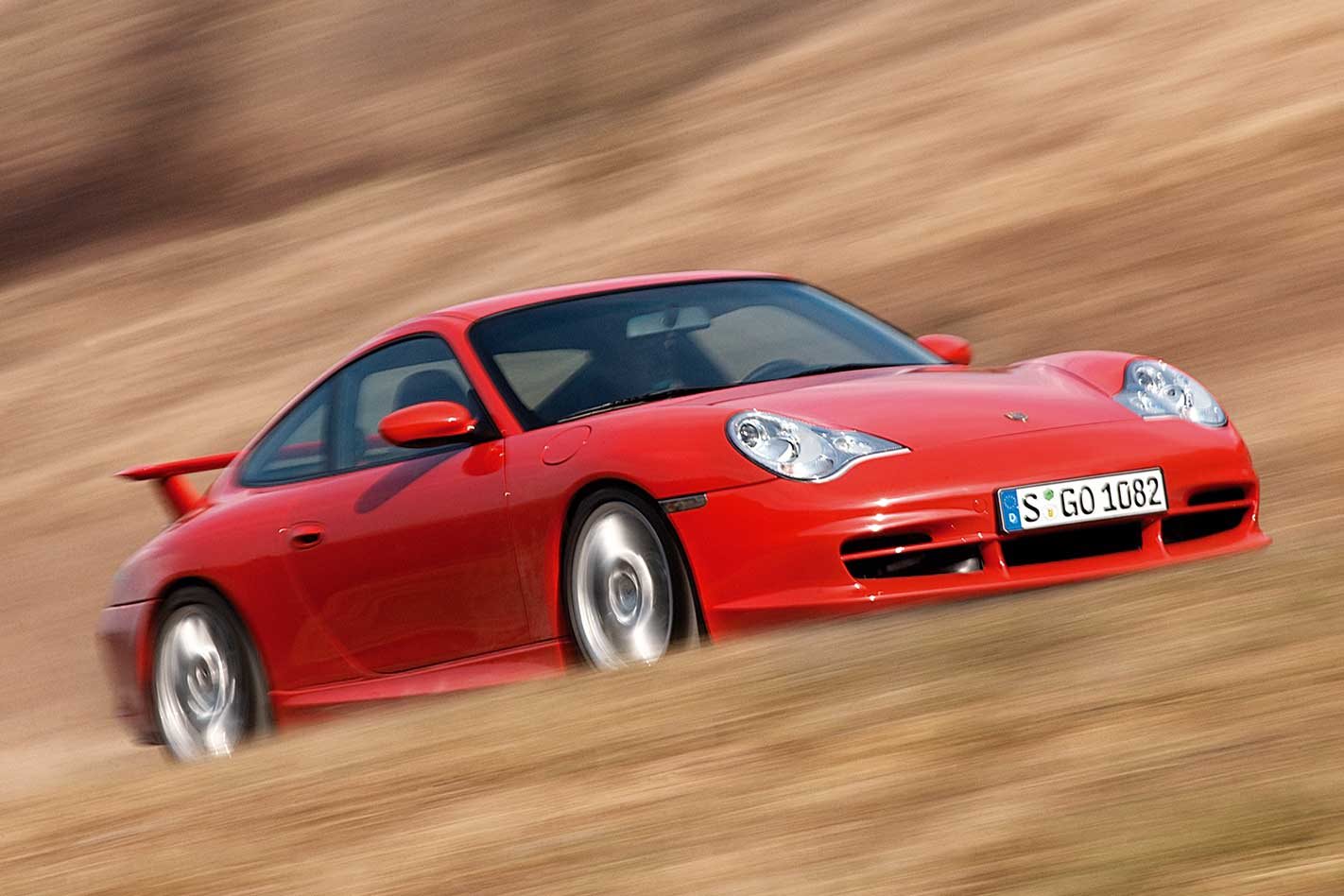Autostrada Venezia-Belluno. It’s Sunday morning, but that does not stop the Italian cops from airing their radar guns.
This review was originally published in MOTOR’s May 2003 issue
Luckily I spot the blue-on-white panda car just in time, but we are not much over the limit anyway, and after a brief stab at the brake pedal the Indian Red (okay, it’s orange) GT3 passes the speed trap at a politically correct 130km/h.

It’s available as coupe and convertible, as broad-shouldered 4S and as translucent Targa and in rear-wheel-drive or four-wheel-drive. The top-of-the-range model of this comparatively conservative and pragmatic bloodline is the 911 Turbo, a 309kW all-wheel-drive coupe. But there is also a sportier, rougher and tougher side to the 911 family tree: this division harbours the awesome 340kW GT2 and the brand-new second-generation GT3, a bespoilered 284kW featherweight due to arrive at dealers in April.
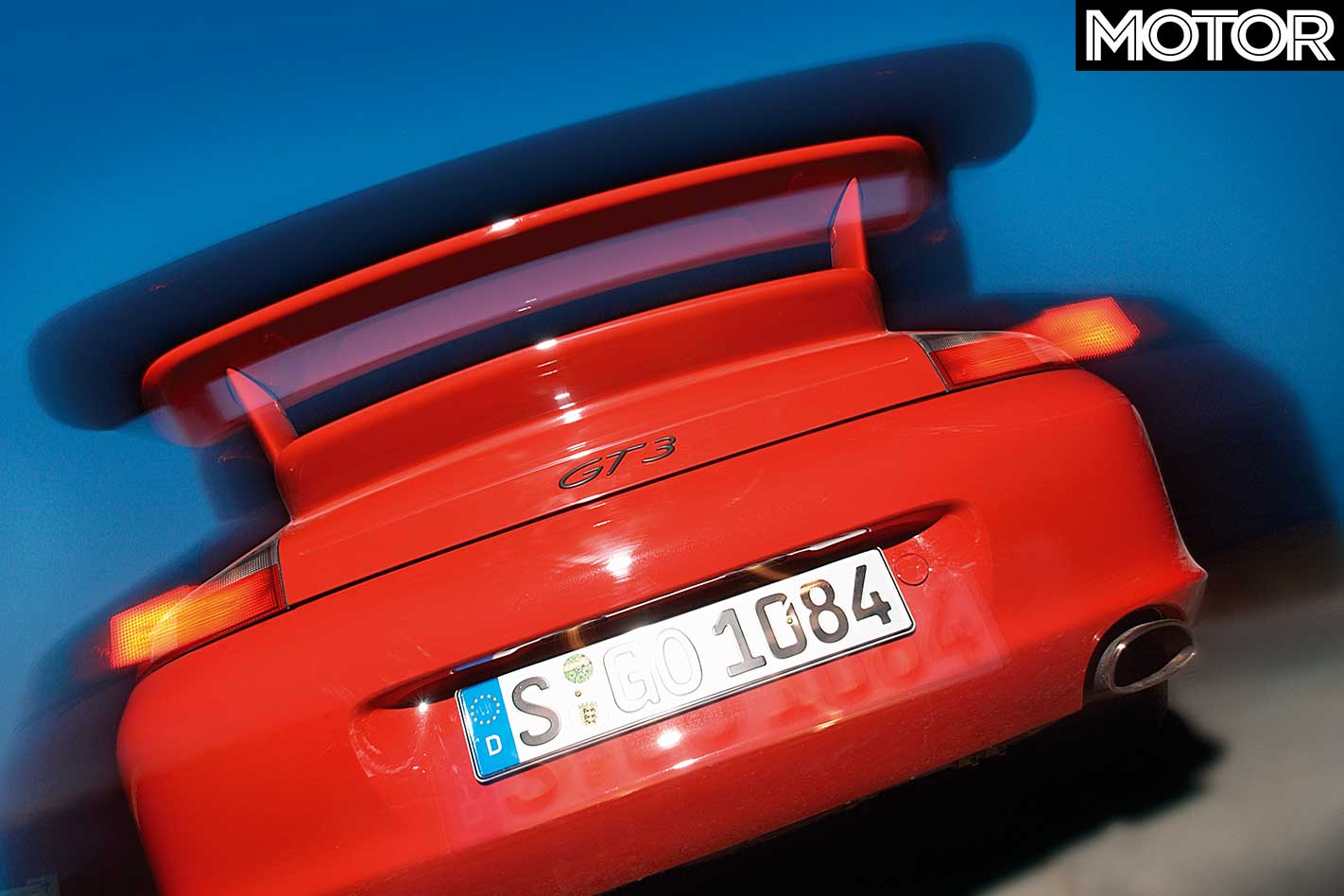
The first-edition 274kW GT3 – built in two batches between June 1999 and December 2000 – was roughly ten percent less expensive than its replacement, and available only in limited numbers. Not so the new GT3, which will be around until the 996 gives way to the 997 in mid-2005.
Porsche expects to build at least 2500 batmobiles, among them up to 500 right hand-drive models which are again handicapped by that miniature 64-litre fuel tank.
Like its predecessor, the MkII GT3 is primarily aimed at amateur racers who like to use their hardcore 911 as a weekend track tool. That’s why the factory offers a no-cost Clubsport option which includes a roll cage, six-point belts and tight-fitting bucket seats. Although the springs, the suspension kinematics and the rear wing are adjustable for competition purposes, there exists only one street-legal set-up.
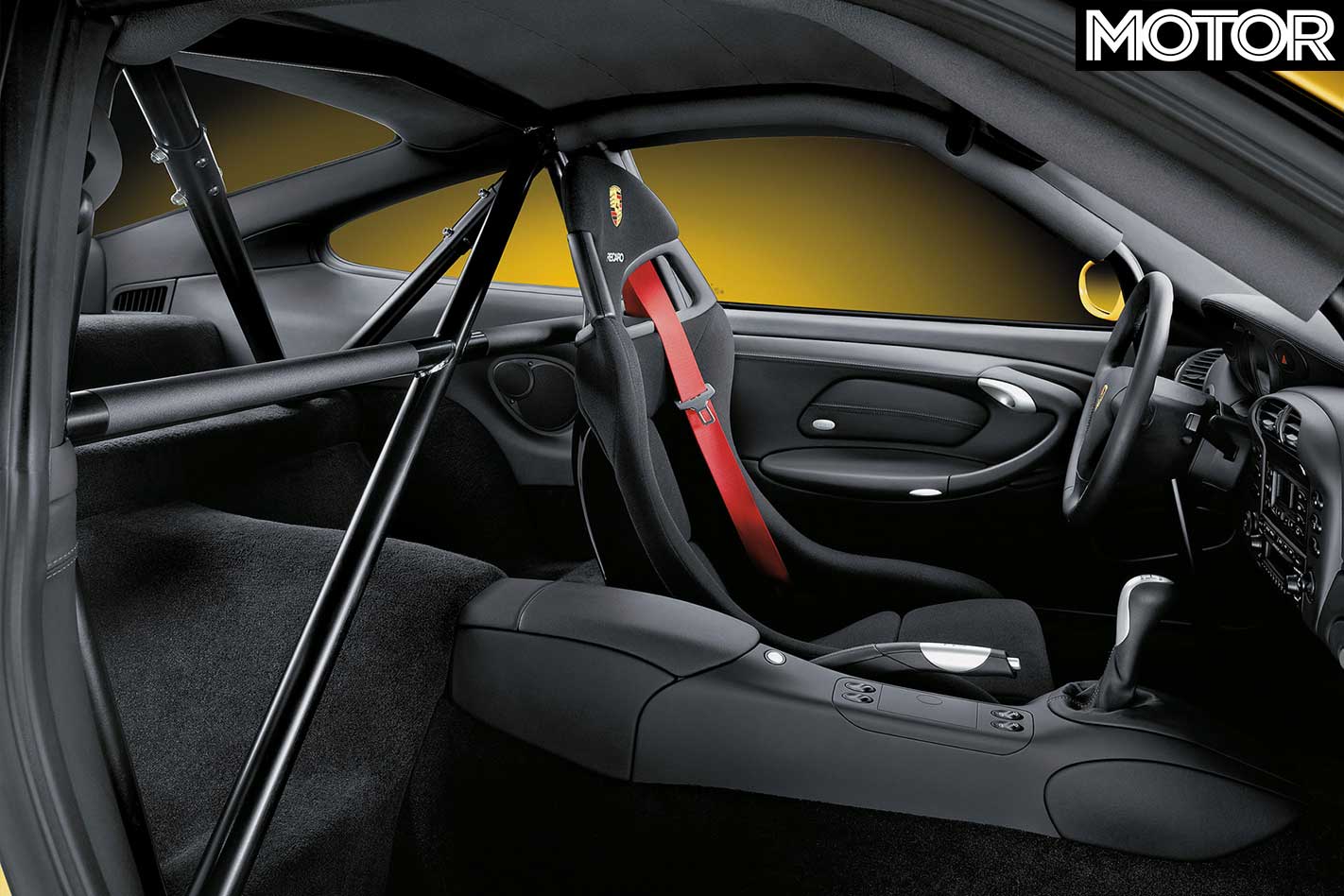
Aerodynamic modifications include a new front apron, redesigned sill covers, a bi-plane tail spoiler and a flush-fitting underbody. While the drag coefficient is an unchanged 0.30, axle lift has been reduced and the downforce has increased.
All this sounds quite promising, but if you think the new 911 follows the chosen line without any ifs or buts, think again – or take a high-speed ride.
Up to 200km/h, the GT3 is as benign as a pussy cat in front of the fireplace. Between 200km/h and 250km/h, however, the cat will spit, show its claws and arch its back. From 250km/h all the way to the 306km/h top speed, on a fast stretch of Autobahn which is neither dead straight nor mirror flat, the GT3 makes the driver feel like a jet ski rider battling the waves.
The front end goes through the full pitch and yaw spectrum, the suspiciously light steering is struggling to find rhythm and the directional stability is more of a letter of intent than a signed contract. No, this car isn’t about confidence or trust. It’s about sheer speed and goose-pimple excitement.
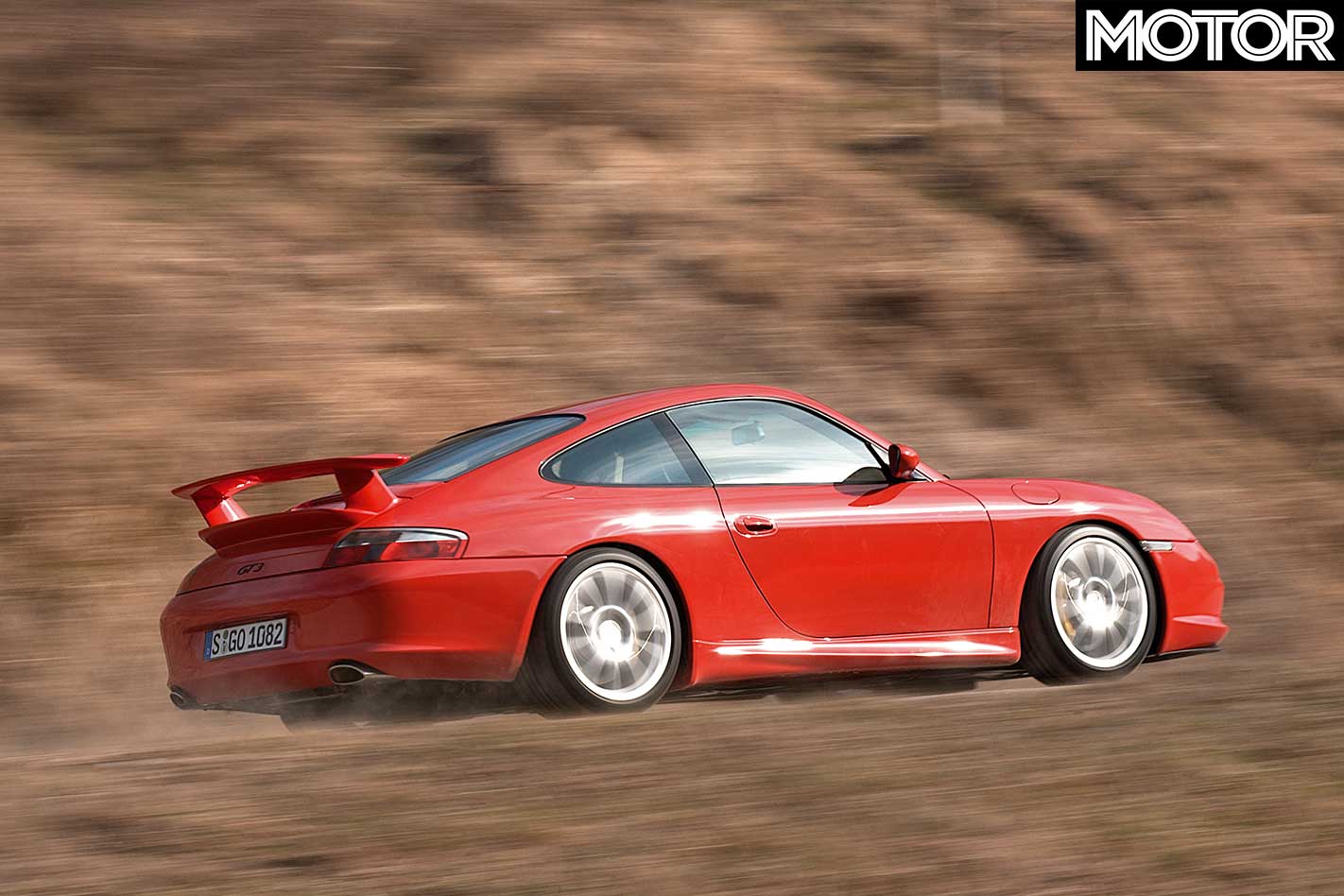
The Swabians are quick to point out the GT3 was tuned for optimum handling and roadholding, and that the ride comfort was clearly priority number two. True, the suspension is firm, but it’s neither unacceptably harsh nor is the dialogue between springs and dampers ill-matched.
On broken-up roads, however, over ridges and crests or through potholes and dips, the GT3 should be kept on a short leash. There’s plenty of steering fight to attend, pronounced tramlining to deal with and an ever-changing mix of latent understeer and pending oversteer which puts all six senses on alert.
To beef up the roadholding, Porsche fitted even wider 18-inch rims shod with 235/40 rubbers in the front and 295/30 footwear in the rear. Michelin Pilot Sport and Pirelli P Zero Rosso are the only homologated tyres.
Our test car was equipped with the optional ceramic disc brakes, new to the GT3. Priced at a whopping $14,000 and sporting yellow instead of red calipers, they respond promptly, are immensely powerful and virtually immune to fading.
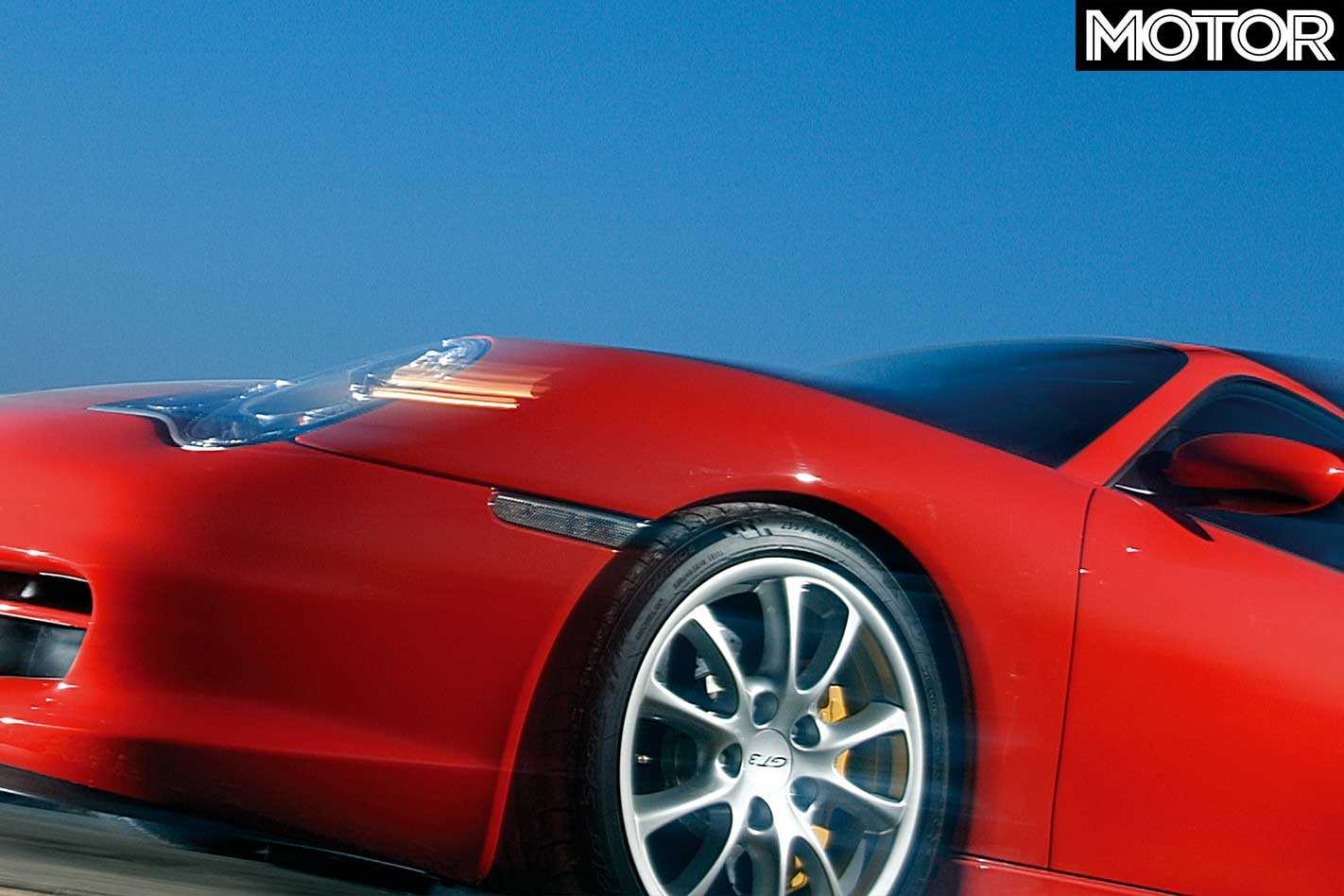
Dive even deeper into a corner, and you feel the brake balance transferring more work to the rear wheels, and squash energy incredibly hard time after time without ever detecting a variation in pedal travel or effort.
The ceramic discs don’t only enhance active safety, they reduce the unsprung weight by about 18kg. It is worth noting though the standard brakes have been upgraded, too. Key improvements include larger diameter cross-drilled and ventilated front discs, bigger cooling ducts and stronger six-piston front calipers with a 40 percent greater swept area.
The overriding development goal of the R&D squad was to remove weight, the result here an ascetic 1377kg. The long list of calorie-reducing measures concerns the rear seats (gone), the wheels (new flow-forming design) and the standard equipment (which includes several delete options).
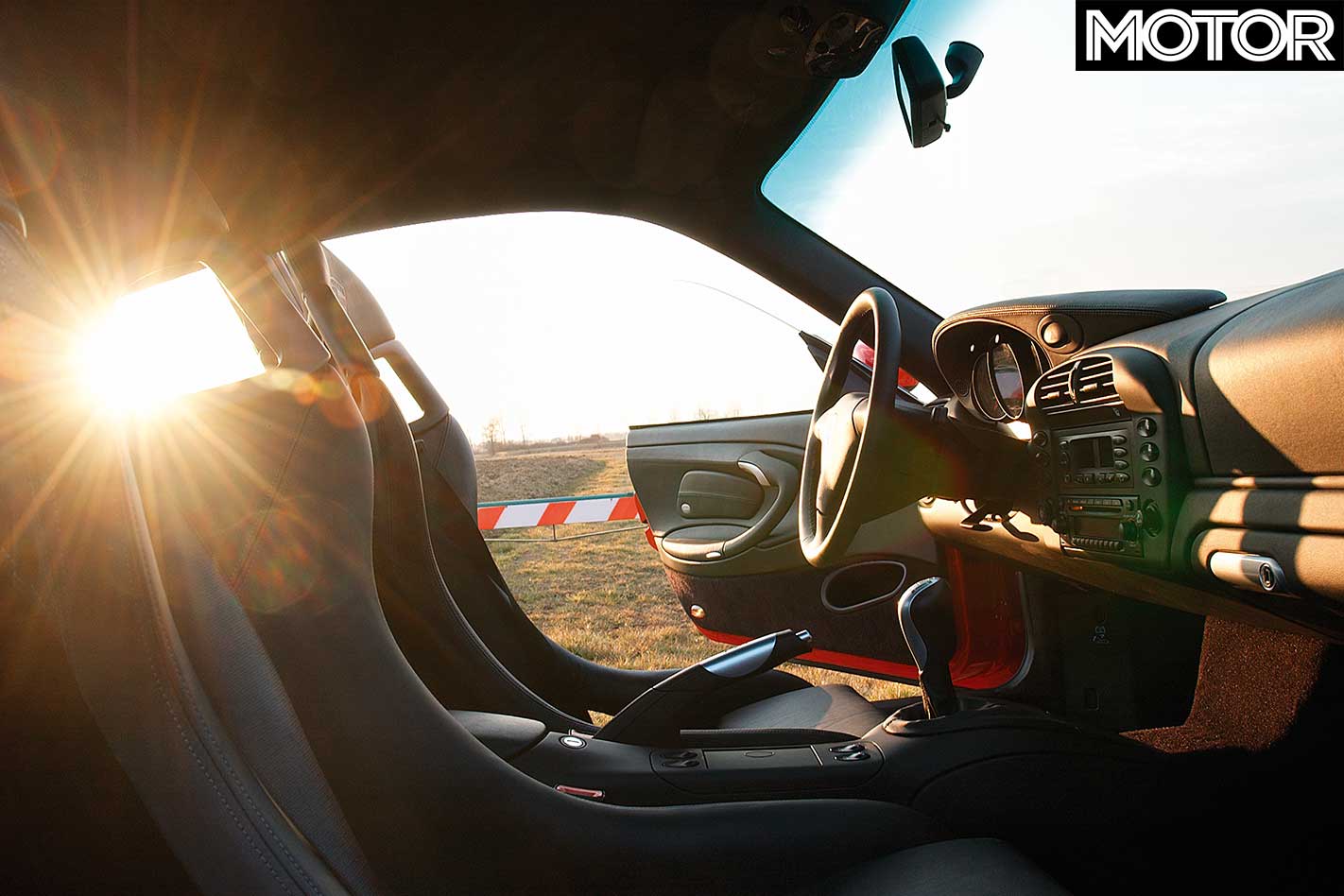
The corporate weight watchers have also dealt with the engine, now 3.5kg lighter thanks to smaller tappets, slimmer valves, shorter pistons and thinner con rods. By reducing the weight of moving parts and minimising friction losses, the engineers created the precondition for a higher rev limit which is one of the main differences between the old and the new GT3 unit.
Redlined at 8200 instead of 7800rpm, the 3600cc flat-six now churns out 284kW instead of 269kW. Maximum torque has risen slightly from 370 to 385Nm at an unchanged 5000rpm.
Taking a mere 4.5sec to accelerate from 0-100km/h, the 2003 GT3 eclipses the series one version by 0.3sec. The Carrera 2 can repeat this act in five seconds flat, the turbo does it in 4.2sec, and the GT2 gets there in 4.1.
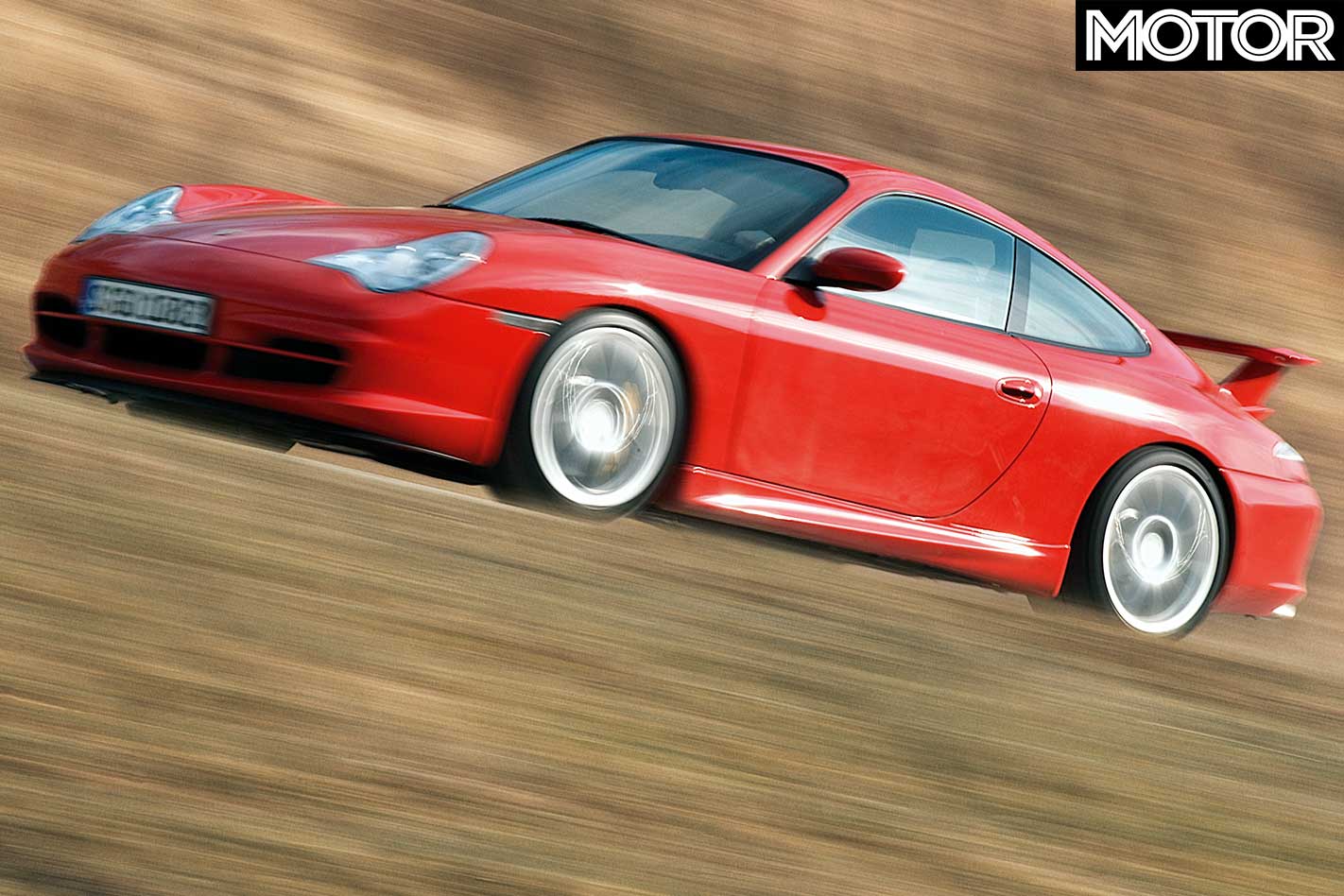
By selecting slightly shorter fifth and sixth gear ratios, the GT3’s pulling power above 200km/h has substantially improved. The maximum speed did, on the other hand, only go up a fraction from 303km/h to 306km/h. While the GT3 is an academic 2km/h faster than the 304km/h Turbo, it is clearly eclipsed by the 315km/h GT2.
In absolute terms, the asking price of $245,000 (est.) can only be described as steep, but in relation to the $306,000 Turbo and the $399,000 GT2, the latest 911 does offer a lot of go and show for the money.
The base engine still owes its fundamental design to the legendary GT1 motor conceived in the mid-’90s. It features a split crankcase, titanium con rods, four-valve cylinder heads and a dry sump. To meet the latest EU4 and LEV emissions, Porsche fitted an electronic throttle and a revised exhaust system.
Also new is the VarioCam camshaft adjustment which can no longer only select between two fixed positions but is progressive and covers a 45 degree range. The six-speed transmission adopts the GT2 linkage for quicker and shorter throws.
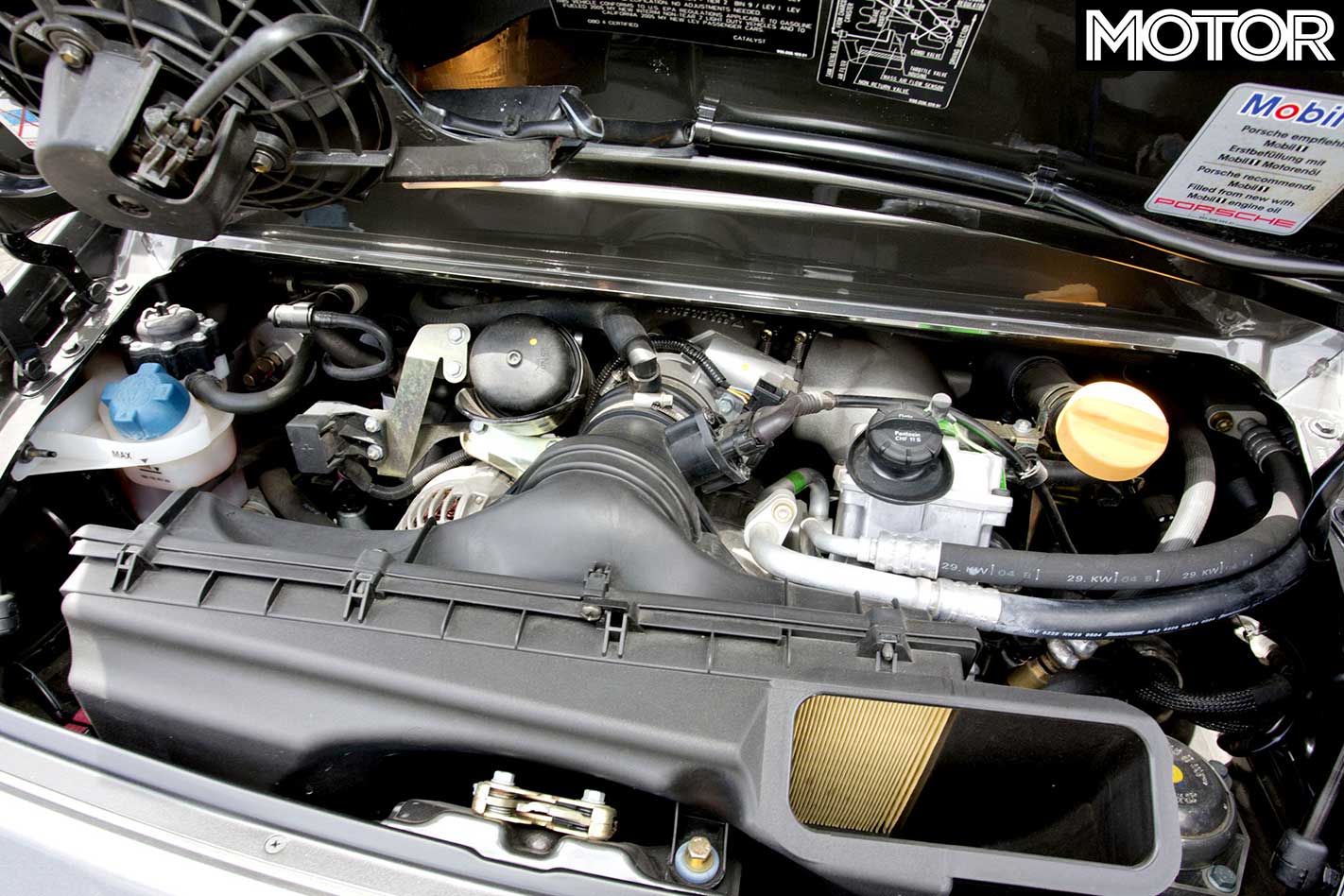
In the GT3, traction control and electronic stability control are conspicuous by their absence. Instead, this model is fitted with a mechanical diff lock which employs a 40 per cent locking ratio under power and a 60 per cent lock under trailing throttle.
Although the winged warrior has no problems putting all the oomph down on the tarmac, the transition from grip to slide and vice versa can be sudden and edgy.
Unlike other 911s, the GT3 is comprehensively equipped and there are really only two truly desirable options: the aforementioned ceramic brakes and the high-intensity bi-xenon headlights.
The question does arise, however, why a car of this calibre and pedigree is not available with an alternative quickshift gearbox, be it an Audi TT-style twin clutch direct-drive transmission or a sequential paddle-shift box like in the Ferrari 575M. Also missing are tyre pressure monitors and a steering wheel which adjusts in reach and rake.
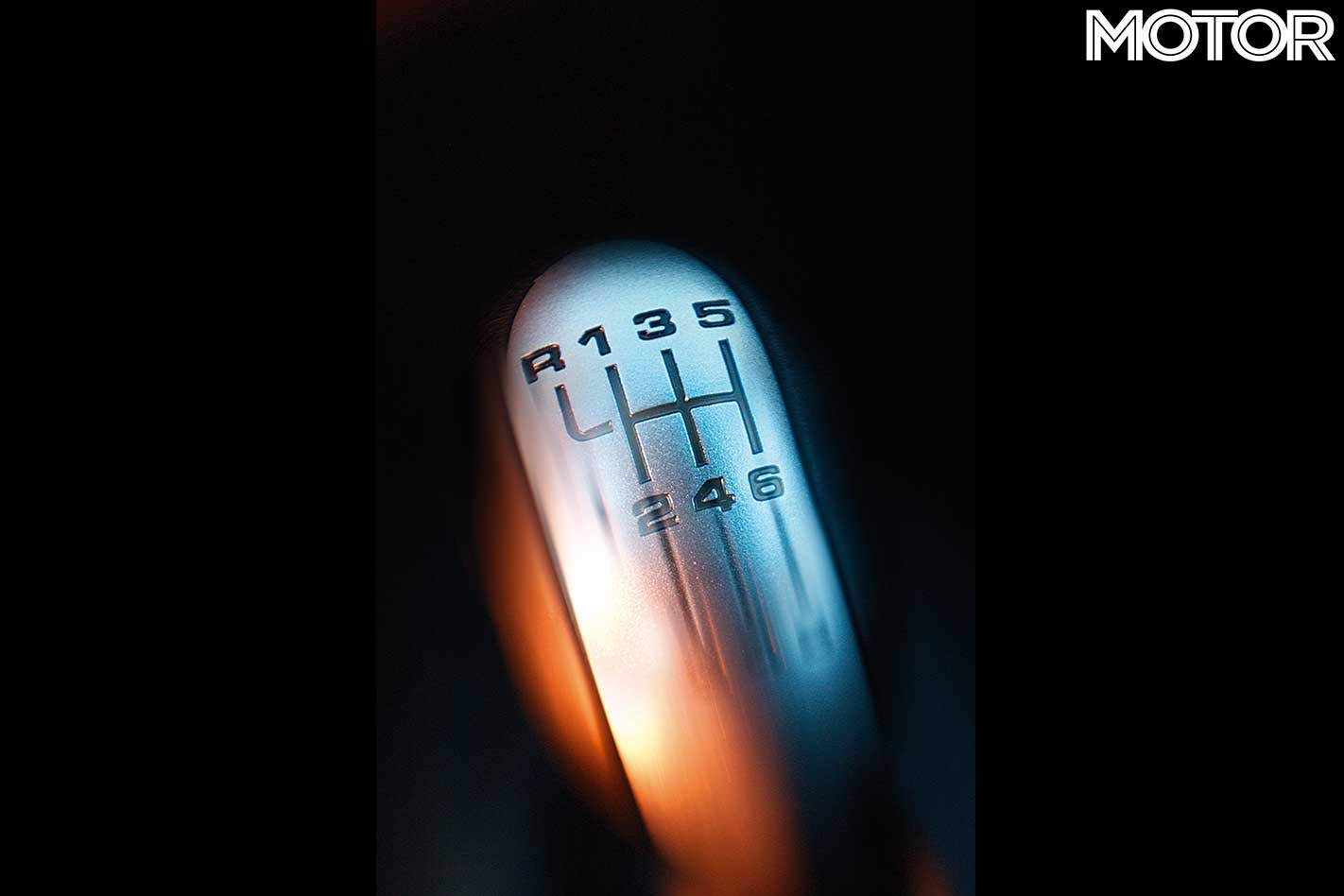
Of course these items don’t matter much in the grander scheme of things which ranks the GT3 as the most uncompromising driving machine this side of the GT2. The best way to relish the difference between this 911 and its lesser stablemates is to keep revving the 3.6 litre engine to the redline, from gear to gear, from toll booth to fast lane, up the hill and down.
Pushed hard, first will take you to 74km/h, second stretches to 133km/h, third runs out of steam at 181km/h, fourth is good for 234km/h, and fifth throws in the towel at 275km/h. The GT3 requires only 14.3 seconds to catapult itself from standstill to 200km/h. At the same time, the Porsche is perfectly happy to potter along in top gear at 2000rpm where 80 per cent of maximum torque’s on standby.
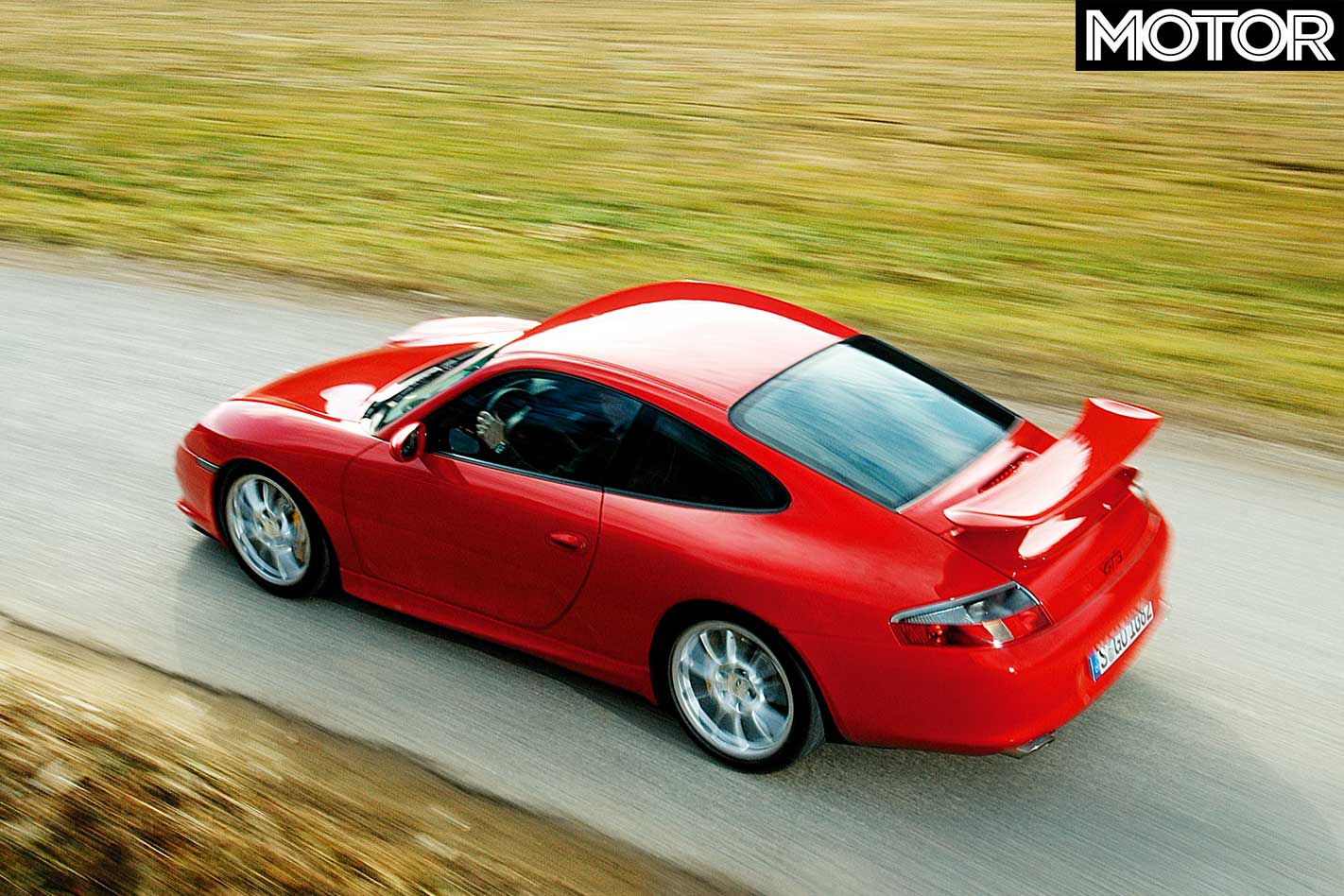
Between 2500 and 5000rpm, the resonance chamber will open to bolster the mid-range. Above 5000rpm, the by-pass closes again so the short respiratory ducts can support that distinct willingness to rev.
The new GT3 is only marginally more powerful, more flexible and quicker than the car it replaces. But when you add up the individual kW, Nm and km/h advantages, the difference between old and new becomes obvious. It’s raw and pure, and elevates the game. Neither the press kit nor the owner’s manual say so, but the new GT3 is definitely capable of sifting the men from the boys.
After that wild ride I’m just not sure anymore which group I belong to.
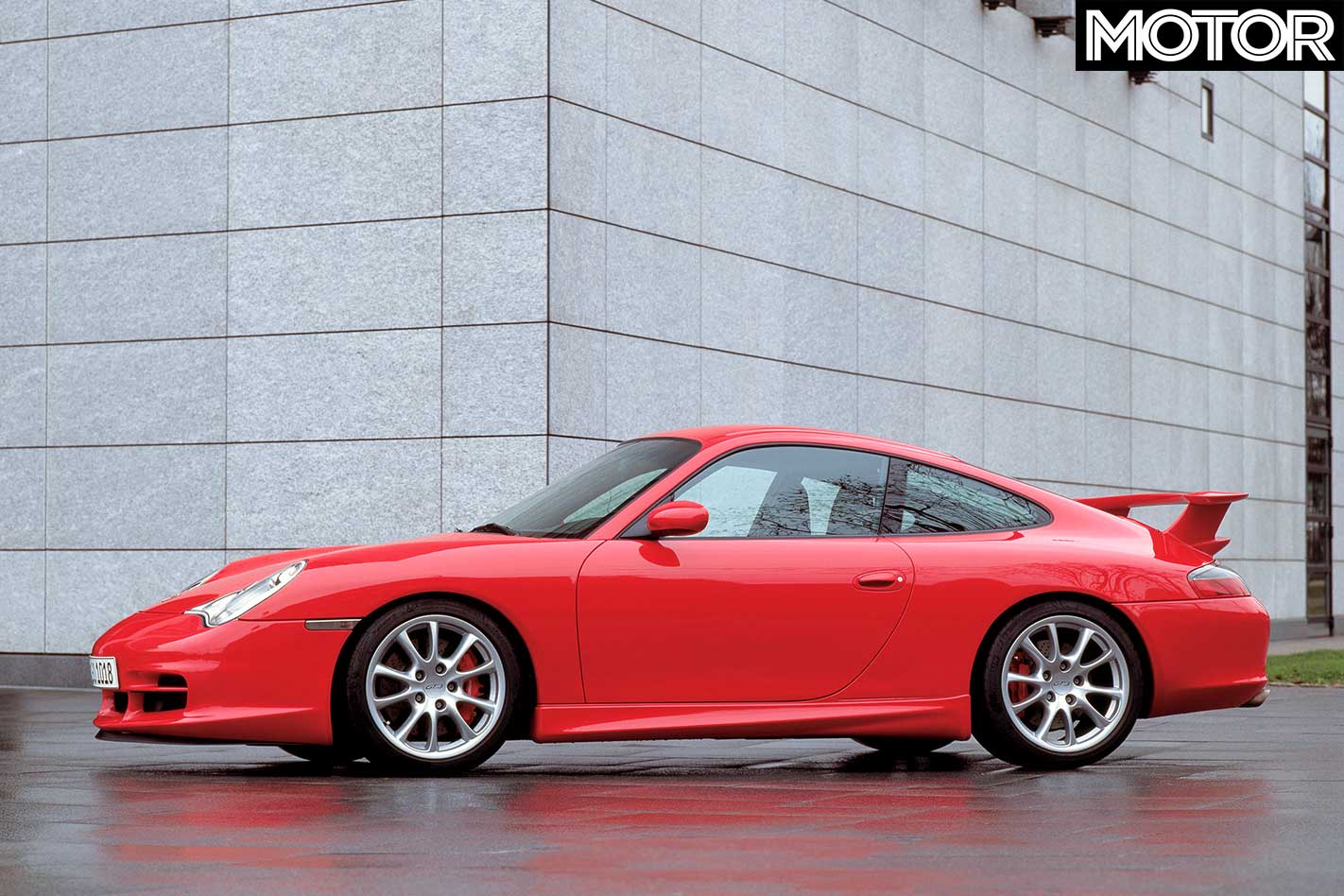
FAST FACTS 2003 Porsche 911 GT3
DRIVE: rear-wheel ENGINE: rear-mounted 3.6-litre DOHC 24-valve flat-six BORE/STROKE: 100mm x 76.4mm COMPRESSION RATIO: 11.7:1 POWER: 284kW @ 7400rpm TORQUE: 385Nm @ 5000rpm WEIGHT: 1377kg POWER-TO-WEIGHT: 206kW/tonne TRANSMISSION: 6-speed manual SUSPENSION: MacPherson struts, coil springs, anti-roll bar (f); multi-link, coil springs, anti-roll bar (r) L/W/H: 4435/1770/1275mm WHEELBASE: 2355mm TRACK: 1485mm (f); 1495mm (r) BRAKES: 360mm ventilated discs, six-piston calipers (f), 330mm ventilated discs, four-piston calipers (r), ABS WHEELS: 18 x 8.5-inch (f); 18 x 11-inch (r), alloy TYRES: Michelin Pilot Sport, 235/40 ZR18 (f); 295/30 ZR18 (r) FUEL: 64 litres, PULP PRICE: $245,000 (est.)

